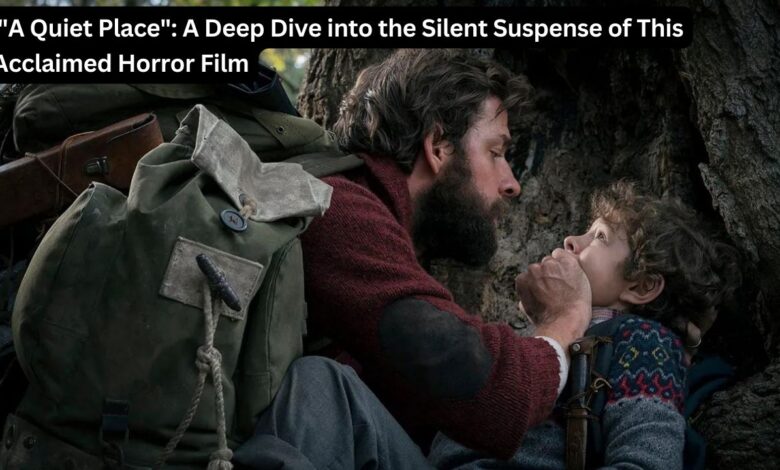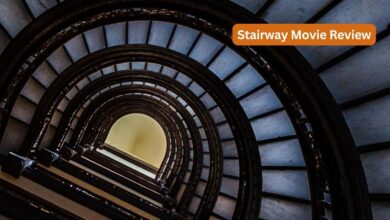“A Quiet Place”: A Deep Dive into the Silent Suspense of This Acclaimed Horror Film

Introduction
“A Quiet Place,” directed by John Krasinski, has taken the horror genre by storm with its unique approach to suspense and storytelling. Released in 2018, the film has garnered critical acclaim for its innovative use of silence and its emotionally charged narrative. Set in a post-apocalyptic world where sound-sensitive creatures hunt humans, “A Quiet Place” challenges traditional horror tropes by amplifying tension through near-total silence. This article delves into the film’s narrative, performances, direction, and overall impact, offering an in-depth look at why “A Quiet Place” stands out as a remarkable entry in contemporary horror cinema.
Plot Summary
The film is set in a dystopian future where Earth has been overrun by blind creatures with an acute sense of hearing. These creatures hunt and kill any living being that makes noise, creating a world where silence is not just golden but essential for survival. The story follows the Abbott family—Lee (John Krasinski), Evelyn (Emily Blunt), and their children Regan (Millicent Simmonds) and Marcus (Noah Jupe)—as they navigate their day-to-day lives in this perilous environment.
The Abbotts live in a rural farmhouse, where they have adapted their lives to minimize noise. They communicate using American Sign Language, which is integral to their survival. The family’s carefully constructed routine is disrupted when Evelyn discovers she is pregnant, raising concerns about how a newborn’s cries will affect their safety. As the family grapples with the impending arrival and the constant threat of the creatures, they must confront both external dangers and internal fears.
Performances
John Krasinski as Lee Abbott
John Krasinski, who also co-wrote and directed the film, delivers a powerful performance as Lee Abbott. Krasinski’s portrayal of Lee is marked by a deep sense of paternal concern and resilience. His character’s determination to protect his family is palpable, and his ability to convey complex emotions through minimal dialogue enhances the film’s tension. Krasinski’s performance is a testament to his skill as an actor and director, contributing significantly to the film’s success.
Emily Blunt as Evelyn Abbott
Emily Blunt’s role as Evelyn Abbott is both emotionally and physically demanding. Blunt’s portrayal of a mother trying to keep her family safe while dealing with the challenges of impending childbirth is both intense and heartfelt. Her performance brings depth to Evelyn’s character, balancing vulnerability with strength. Blunt’s ability to convey fear, hope, and resolve through subtle expressions and gestures plays a crucial role in the film’s emotional impact.
Millicent Simmonds as Regan Abbott
Millicent Simmonds, who is deaf in real life, brings an authentic and poignant dimension to her role as Regan Abbott. Her performance adds a layer of authenticity to the film’s depiction of a deaf character navigating a world where silence is a matter of survival. Simmonds’ portrayal of Regan’s bravery and resourcefulness is compelling, and her character’s struggle with feelings of guilt and inadequacy provides a significant emotional arc in the film.
Noah Jupe as Marcus Abbott
Noah Jupe’s portrayal of Marcus Abbott, the youngest child in the family, is both sensitive and believable. Jupe captures the fear and vulnerability of a child growing up in such a hostile environment. His character’s journey through fear and growth is portrayed with nuance, contributing to the film’s overall emotional depth.
Direction and Cinematography
John Krasinski’s Directorial Vision
John Krasinski’s directorial approach to “A Quiet Place” is a masterclass in tension and minimalism. Krasinski’s use of silence as a storytelling device creates an immersive and unsettling atmosphere. His direction ensures that every sound and visual element contributes to the film’s suspense, heightening the sense of dread and urgency. The pacing is meticulous, with each scene designed to maximize the impact of silence and sound.
Cinematography
The cinematography, led by DP Charlotte Bruus Christensen, plays a crucial role in building the film’s tense atmosphere. The use of natural light and the film’s muted color palette enhance the sense of isolation and desolation. Christensen’s camera work captures the Abbotts’ environment in a way that emphasizes both the beauty and danger of their surroundings. The careful framing and movement contribute to the film’s claustrophobic feel, making the viewer acutely aware of the constant threat looming over the characters.
Themes and Symbolism
Silence as Survival
At its core, “A Quiet Place” explores the theme of silence as a means of survival. The film uses the concept of silence not just as a plot device but as a metaphor for the struggles and sacrifices the characters endure. The Abbotts’ silent communication reflects their adaptation to a world where noise equates to danger. This theme is intricately woven into the narrative, highlighting the lengths to which people will go to protect their loved ones.
Parenthood and Sacrifice
The film also delves into the themes of parenthood and sacrifice. The Abbotts’ actions are driven by a profound desire to protect their children, even at great personal risk. Evelyn’s pregnancy and the impending birth of her child symbolize hope and renewal, even in a world marked by fear and loss. The sacrifices the parents make underscore the film’s exploration of familial love and resilience.
Isolation and Fear
Isolation is another prominent theme in “A Quiet Place.” The Abbotts’ physical and emotional isolation from the world reflects their internal fears and struggles. The film examines how isolation affects their relationships and decisions, adding layers of complexity to the characters’ experiences. The constant fear of the creatures underscores the pervasive sense of dread that pervades their lives.
Impact and Reception
Critical Acclaim
“A Quiet Place” received widespread acclaim from critics for its innovative approach to horror. The film’s use of silence as a central element of suspense was praised for its originality and effectiveness. Critics lauded the performances, particularly those of Emily Blunt and Millicent Simmonds, and commended John Krasinski’s direction and screenplay. The film’s ability to balance horror with emotional depth contributed to its positive reception.
Audience Response
Audiences responded enthusiastically to “A Quiet Place,” drawn to its fresh take on the horror genre and its compelling character-driven narrative. The film’s suspenseful atmosphere and emotional resonance resonated with viewers, making it a commercial success. The unique concept and effective execution have made “A Quiet Place” a standout film in modern horror cinema.
Conclusion
“A Quiet Place” is a landmark film that redefines the horror genre through its innovative use of silence and suspense. With strong performances from John Krasinski, Emily Blunt, Millicent Simmonds, and Noah Jupe, the film delivers a gripping and emotionally charged experience. The direction and cinematography enhance the film’s tense atmosphere, while its exploration of themes such as survival, parenthood, and isolation adds depth to the story. As a groundbreaking entry in horror, “A Quiet Place” stands as a testament to the power of silence and the art of suspenseful storytelling.



